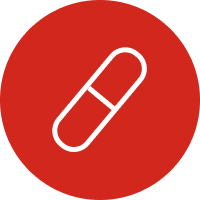
Although overall healthcare costs in Japan are rising with the aging population, statistics show that total pharmaceutical market has been well under control with the various pricing systems introduced in the recent years.
Pharmaceutical market: Japan’s healthcare spending in fiscal year 2022 increased by 3.7% (1.66 trillion yen) to 46.7 trillion yen. Medical cost per capita is 373,700 yen which is an increase of 4.2% compared to the previous year. Although the pharmaceutical market size reported by Ministry of Health, Labour and Welfare has not been publicly available since 2017 data, it was reported to be 11.3 trillion yen, increase of 3.1% compared to the previous year, according to IQVIA. However, after the drastic pricing system reform in 2018, price revision in relation to the consumption tax increase on October 2019 was conducted on all products as well as the first off-year price revision was conducted in fiscal year 2021. As such, drug price revision has technically been conducted every year since 2018. A reduction of 120 billion yen (healthcare cost basis) was made in the price revision of 2024.
NHI pricing system reform: The drug pricing system reform of 2024 was implemented with the aim of “strengthening drug discovery capabilities and eliminating drug lag/drug loss”. That was positive for promoting innovation, as including recognition of rapid introduction of innovative drugs into Japan and evaluation of drug development for pediatric use. It is critical to continue the positive flow of innovation to further enhance the attractiveness of Japan’s pharmaceutical market as an investment target for the development of innovative drugs and to prevent new drug lag/drug loss.
Off-year price revision: As for the off-year price revision 2025, the pharmaceutical industry side had repeatedly argued that it is not the right timing to implement the revision, since the situation of inflation, price discrepancy between NHI and market price, concerns about stable supply, the situation of drug lag/drug loss, and the attractiveness of the Japanese market are different from those when the four Ministers agreed. However, the off-year price revision was carried out with “reduction of the national economic burden,” “promotion of drug discovery innovation,” and “securing of stable supply” as the basic principle. We consider that there were issues in terms of the flow toward innovation promotion through the system reform 2024, and policy consistency.
CEA/HTA (Cost-Effectiveness Analysis/Health Technology Assessment): Since the full-scale operation began in 2019, the system has been organized through revisions in every two years. The revision 2024 has improved the transparency of the cost-effectiveness assessment system to a certain extent, but still faces challenges. For example, the process is opaque and the criteria for selecting the items to be evaluated are ambiguous, there is insufficient scientific evidence to determine the cost-effectiveness, incentives for innovation may not function if the price adjustment range is expanded in the future, and patient involvement is limited. Reflecting upon the learnings from European countries, expanding the scope of CEA/HTA price adjustment and potentially being used as reimbursement decision-making may not only impede patient access to innovative medicine but may also lead to further drug-lag / losses as it undermines the predictability of prices. Additionally, all stakeholders, including academics, government and industries, are affected by significant operational burdens. The CEA/HTA must not become a system which leads to further drug price containment, as Japan already has several effective systems for controlling drug prices. The CEA/HTA should be maintained as it is since its principled position as complementary to the NHI system, as we can learn from the European lessons learnt of the significant challenges.
Introduction of new regulatory system: Recently, increasing number of drugs that are not developed in Japan in spite that those drugs are approved in overseas, so called ‘drug loss’, is becoming an issue in Japan, and MHLW panel reviewed regulations for drug development/approval to enhance introduction of medically necessary drugs, and also from the viewpoint of securing robust and efficient quality and stable supply of drugs, etc. As a result, notifications regarding orphan drug designation, pediatric development, and the necessity of Japanese data have been issued, and discussions have also begun on establishing a clinical trial ecosystem. Improvements to pharmaceutical regulations and systems should be continued to reduce drug loss and lag. Likewise in relation to management of manufacturing process, the introduction of moderate modifications (trials) are also being considered. In addition, during the discussion towards the revision of Pharmaceuticals and Medical Devices Act, it has been proposed to review GMP compliance inspections, etc, and further discussions is expected to be held. Future considerations seek the establishment of a pharmaceutical regulatory system concerning quality, including GMP compliance investigations, with a view towards international harmonization.
Key issues and recommendations
-
Published:
Drug pricing system
status:
Some progress -
Published:
Cost-Effectiveness Analysis / Health Technology Assessment (CEA/HTA)
status:
No progress -
Published:
International harmonisation (clinical trial environment)
status:
Some progress -
Published:
New scheme related to new drug review and approval
status:
Some progress
Chairman
EFPIA Japan
(President and Representative Director, Sanofi K.K.)
EFPIA Office:
Tokyo Opera City Tower, 3-20-2
Phone: 03-6301-4094
Members
Alexion Pharma
AstraZeneca
Bayer Yakuhin
Bracco Japan
Chugai Pharmaceutical
CSL Behring
Ferring Pharmaceuticals
GE Healthcare Japan
Genmab
GlaxoSmithKline
Guerbet Japan
Ipsen Pharma Japan
LEO Pharma
Lundbeck Japan
Merck Biopharma
Nihon Servier
Nippon Boehringer Ingelheim
Novartis Pharma
Novo Nordisk Pharma
Nxera Pharma Japan
Sanofi
UCB Japan


